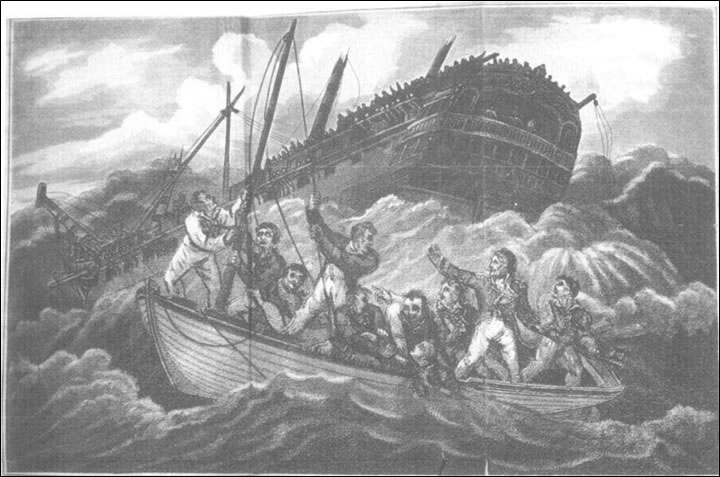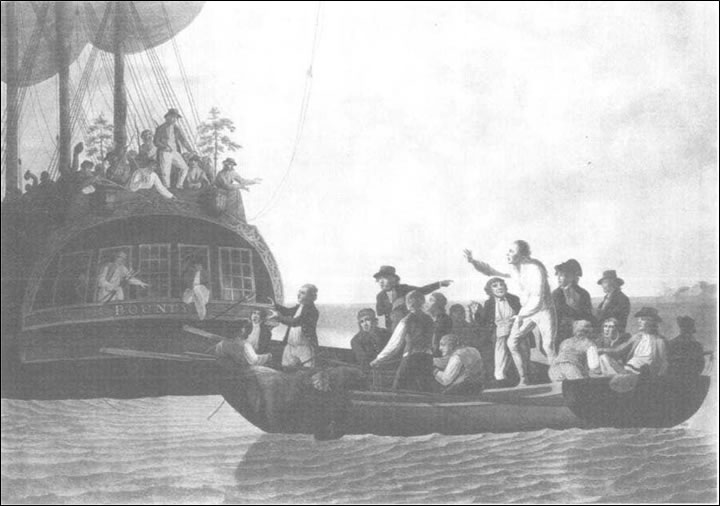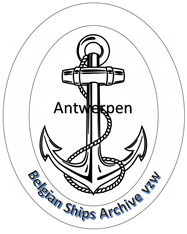Shipwreck narratives of the eighteenth and early nineteenth century: indicators of culture and identity(II)
His ordeal earnt him royal favour: a pension of £ 300 p.a. and the command of a Man-of-War. The title page of Inglefield's account refers to the 'Miraculous Preservation of the Pinnace', but he himself mentions Providence only once, when the survivors sight land, and never explicitly ascribes his escape to the workings of divine power. Yet though he achieved still greater notoriety when he separated from his wife in 1786, accusing her of adultery with a black servant (an acrimonious dispute in which both parties rushed to print their story), the loss of the Centaur was thought a fit subject for a Cheap Repository Tract. Re-written in the third persan, it concludes with a singular instance of circumstances being wrenched to fit an ideological construct:
In this miraculous and wonderful manner was Providence pleased to preserve Captain Inglefield and his few worthy sailors, that they might at the end of all their extraordinary perils be enabled to say, 'O that men would praise the LORD for his goodness and declare his wonderful works to the children of men'.
When Captain Pierce of the Halsewell expected his ship to be driven onto the rocks, he also was chiefly interested in the safety of a few. He ordered his chief officer secretly to instruct the officers to reserve the long boat for themselves and the ladies, should there be a chance to use it. The term ‘ladies’ here does not seem to have included soldiers' wives.

2. Loss of the Centaur, 74 guns. in the middle of the Atlantic Ocean
Survivors of shipwreck often resorted to cannibalism, eating those who died or choosing one person to be killed so that the others might live longer. Apparently, this grim practice was accepted among seamen facing starvation and not considered a crime provided that lots were properly drawn - though even when lots were cast, the shortest straw often seems to have been drawn by the most obvious victim.
Survivors from the wreck of the Nottingham Galley in 1710 resorted to eating their carpenter, who had died from deprivation. In the published account, the effect on the crew of eating human flesh is represented in predictably negative terms. The master was forced to store the flesh on crags beyond the reach of the rest of the party, many of whom were sick and lame, and to regulate its use:
for on a sudden, he perceiv'd an Alteration in their Dispositions, infinitely to the worse, from a quiet, peaceable, affectionate Temper: a resign'd, submissive, religious Frame of Mind; the Majority grew fierce, brutish, barbarous, impatient in their Afflictions, and refractory to Command, using ill Language, Oaths and imprecations.
The change in diet even seemed to aggravate the crew's ulcers and sores.
Shortly afterwards a search party found the survivors and sent one man ashore. The newcomer came close to discovering what had taken place: 'The Man casting his Eye on the Remains of the Flesh, exposed to the Frost on the Summit of the Rock, expressed his Satisfaction at their not being destitute of Provisions; and the Master acquiesced in the Justice of his Sentiments, without unravelling the Mystery'. Cannibalism may have been an accepted practice among seamen but clearly it was unacceptable to say this on land. The narrative expresses both shame and horror, and implies that cannibalism turns men into beasts.
IV
Shipwreck accounts give particular insight into the constitution of the self at this time. They contribute to contemporary definitions of masculinity and illustrate the perceived role of women in such crises. A few accounts describe seamen getting drunk when shipwreck seems unavoidable; others note their fatalism. In the Centaur disaster, 'some appeared perfectly resigned, went to their hammocks and desired their messmates to lash them in; others were securing themselves to gratings and small rafts; but the most prominent idea, was that of putting on their best and cleanest clothes'. In later accounts, the adjectives most commonly used to describe male bravery when shipwreck threatens is 'manly' or 'manfully'. We are told, with some national prejudice perhaps, that when survivors of the 1791 Pandora wreck met bad weather going to Batavia in a Dutch vessel, 'the Dutch seamen, panic-struck, shrunk below, while the English took their place, and by manly exertion preserved the ship' . Use of the terms 'manly' and 'manfully' to describe courageous attention to duty is especially profuse in nineteenth-century compilations, as might be expected in an age concerned with the 'condition of manliness question'. Felicia Hemans's Casabianca ( 1826) is a notable instance of the promotion of the masculine heroic ideal. The boy who 'stood on the burning deck’ was the son of a French admiral, an added spur to British youths.
Shipwreck narratives also contribute to our understanding of the construction of femininity in this period. As the 1803 illustration of the loss of the Halsewell indicates, when disaster threatened, women were mostly a hindrance, encumbered as they were by inappropriate clothing. Yet women could be an inspiration in adversity, setting an example of religious devotion and uncommon strength of mind. (Indeed this was often the only positive course of action available to them.) In an age when middle-class women were taught that their value rested in such female virtues as discretion and modesty, and that their value depreciated the more they aspired to self-display, any circumstances that made them the focus of attention were problematic. The narrator of the Kent disaster marvels at the 'wonderful self-possession' of the ladies on board: 'The dignified deportment of two young ladies in particular, formed a specimen of natural strength of mind, finely modified by Christian feeling, that failed not to attract the notice and admiration of every one who had an opportunity of witnessing it' .
Impending disaster temporarily reverses the behavioural norm at this period. Although 'on show', far from making women appear superficial, for once this helps to convey their 'female virtues'. The seductive attraction of this pattern of behaviour for women when disaster struck may help to explain why so few managed to save themselves. Perhaps the archetypal portrait of a young woman caught in a shipwreck is to be found in Bernardin de St-Pierre's Paul et Virginie, a tale of innocent love set in Martinique. This hugely popular story, first published in 1788 and reprinted many times, culminates in the heroine's death at sea. A burly sailor attempts to persuade her to save her life by jumping into the water:
The man approached Virginia with respect, and lmeeling at her feet, attempted to force her to throw off her clothes, but she rejected him with modesty, and turned away her head [...] Virginia, seeing death inevitable. placed one hand upon her clothes, the other on her heart and lifting up her lovely eyes, seemed an angel prepared to take her flight to heaven for ever.

3. The Mutineers turning Bligh and part of the officers and crew adrift from his Majesty's ship the Bounty, by R. Dodd, pub. October 1790
With a role model like this, what use promoting cork life jackets? Yet if women did make it to the ship's boat, their flowing attire could be put to good use. Shawls regularly became makeshift sails or distress signals.
Though women might survive shipwreck, their reputations rarely survived captivity. Several white women were reported among the Caffres after the Grosvenor went down. Escape was offered 'but apprehending that their place in society was lost, and that they should be degraded in the eyes of their equals, after spending so great a portion of their lives with savages', they chose to stay with their children and the chiefs who protected them.
V
Artists of the time naturally saw the dramatic visual possibilities of shipwreck and the popular narratives in circulation help us to understand the resonance that images of shipwrecks held for contemporaries. As noted earlier, published accounts were often illustrated with prints which, however formulaic, obtained greater impact from their association with a 'true' story.
Artists could play with the public's familiarity with images of shipwreck. For example, Robert Dodd's image of the Bounty's mutineers, setting adrift Captain Bligh and the men loyal to him, echoes popular prints depicting sailors abandoning ship. Ironically, Dodd reverses both the weather conditions and the roles of the men: the sea is calm, and it is the captain - traditionally the last to leave his ship - who is forcibly cast adrift in the long boat. In turn. the artist who engraved Captain lnglefield abandoning the Centaur for Tegg's edition of the account seems to echo Dodd's image of the Bounty. The implied contrast between Bligh, forcibly ejected from his ship by mutineers, and lnglefield, leaving a loyal crew to their fate, subverts an otherwise sympathetic text.
The print representation of shipwreck scenes in published narratives constitutes an important frame of reference for more ambitious shipwreck paintings by such artists as De Loutherbourg and Turner. Some painters - Turner is an example - understood the appeal of images depicting actual experience and claimed to have witnessed the disasters they represented. The sentiment found in the popular art form is more subtly evoked in some of the paintings aimed at wealthier patrons, which were categorised as 'sublime' and eschew the sensational.4° Moreover, popular prints showing survivors cast onto hostile shores offer a counterpoint to 'authoritative' paintings of European landings on potential colonies that has been little explored as yet.
Shipwreck was a contemporary nightmare that touched the lives of thousands of people in this period. Shipwreck narratives, though a minor genre, yield significant insights into popular culture of the time and deserve wider consideration.

